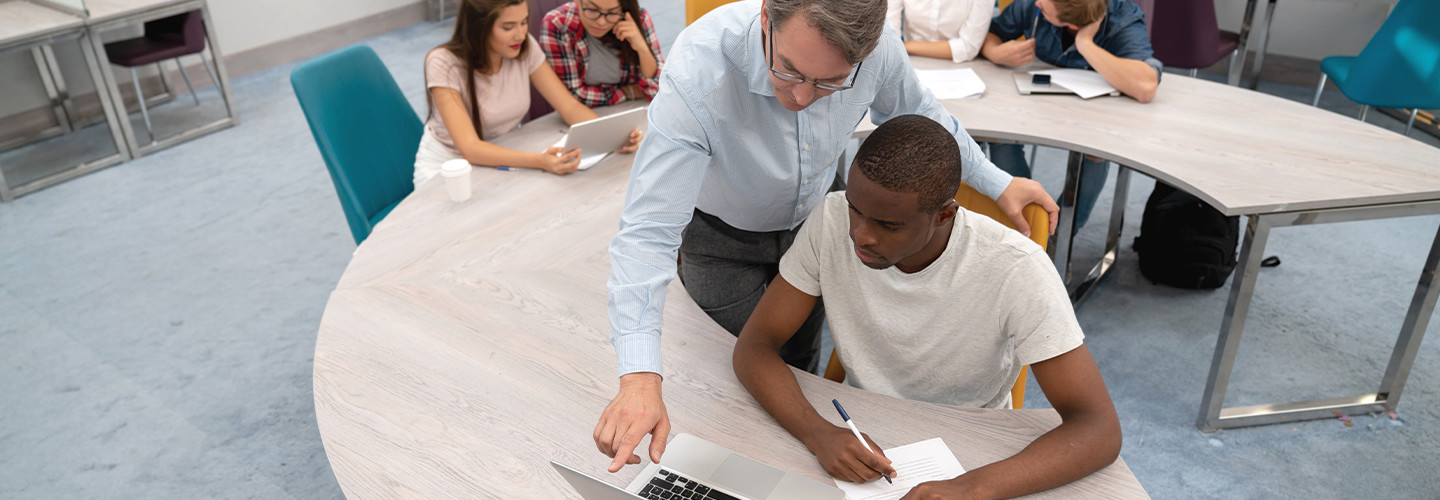Plan for Faculty Support in Introducing Active-Learning Classrooms
Consider spaces like this classroom, situated in the central office of the Rochester City School District. Students can choose from a variety of seating options and adjust seats for their comfort. Modular tables easily come apart and re-form to suit individual and group work. Whiteboard-topped tables let students quickly write and share ideas, and interactive flat-panel displays support interaction and engagement.
While technology is an important aspect of active-learning classrooms, it’s not the only factor that distinguishes these environments from their relatively staid predecessors. Today’s learning spaces are much more likely to be colorful, comfortable and customizable.
By design, they invite students to make themselves at home and take ownership of their educational experience. The one-way transmission of knowledge traditional lectures depended upon has given way to classroom conversations that are just as likely to be led by students as by instructors.
That shift is a big one, and it often creates a need for faculty training and support. As two Penn State educators wrote for the EDUCAUSE Review, “Classrooms [are] more flexible in all aspects, including furniture, ways of sharing content, writing surfaces and power sources. At Penn State, we believe that the professional development we design to support faculty in these spaces must be flexible as well.”
Just as students benefit from agency and flexibility in their learning spaces, so do faculty — and the more that learning spaces evolve to encompass a variety of options, the easier it will be for pedagogies and physical environments to align.
Choose Tech Solutions That Facilitate Engagement and Collaboration
As with most endeavors, as an institution embarks on a reimagining of the learning space, one of the best places to start is with the people who will use it. Bring together instructors, instructional technologists and students to gather their input and ideas. When Rochester district leaders heard students’ opinions of furnishings for the new classroom, they adjusted course on some of their original ideas — ensuring greater buy-in and a bigger return on investment.
Another way to increase flexibility is by choosing the right supporting solutions. Tools such as Microsoft Teams and Cisco Webex Teams give students and faculty an easy, seamless way to collaborate inside and outside the classroom. Videoconferencing tools make it possible for students, guest speakers and even faculty to join class remotely. And, of course, the right networking strategies ensure that connectivity is never a concern.
Simplifying these types of logistical concerns means that students can focus on the reason they’ve come to campus in the first place: to learn, collaborate and create their own best version of the educational experience.
This article is part of EdTech: Focus on Higher Education’s UniversITy blog series.











